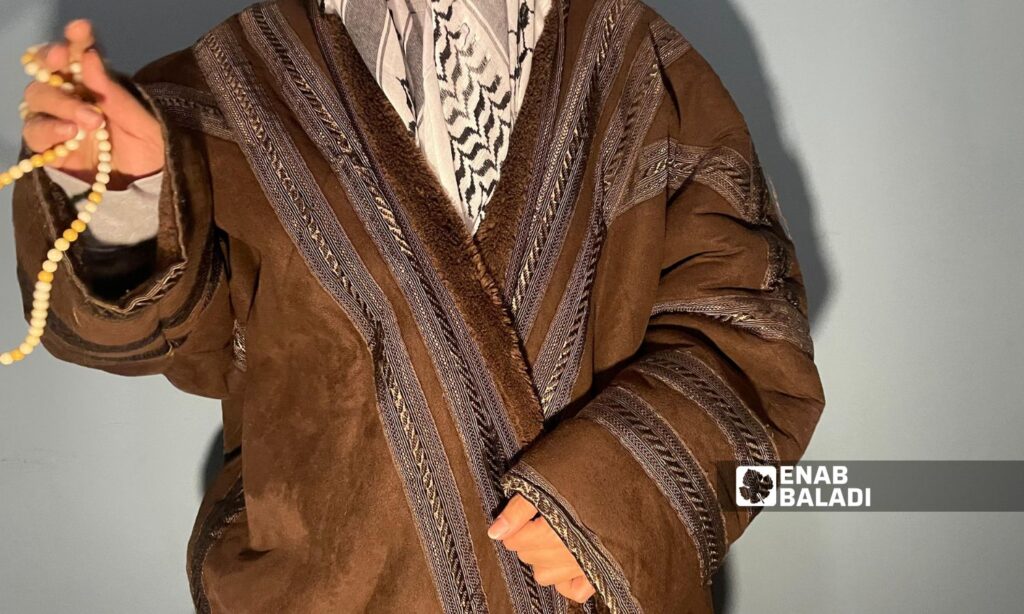Every year, with the onset of winter, demand for buying or wearing a farwa oversized coat increases both inside Syria and in countries where the use of farwa is prevalent.
Farwa is a winter traditional coat made of baize and other types of fabric, and it is usually lined with sheep’s wool or sometimes rabbit fur. The sleeves of the farwa are often embroidered.
Mohammed, a farwa merchant in Bab al-Jabiya area in Damascus, who asked Enab Baladi not to mention his full name for security reasons, mentioned that the manufacture of farwa, bisht (summer cloaks), nasasi (winter cloak without sleeves), and other natural and artificial leather products have now become concentrated in the Damascus and Aleppo governorates after Maarat al-Numan used to lead the Syrian cities in producing farwas.
The manufacturing of the farwa coat depends on either natural fur, usually from sheep, or on local or imported synthetic furs from China and Iran, according to the merchant.
The tufayli fur is considered one of the finest and most expensive types of fur, consisting of the skin and wool of young sheep, which makes it desirable for its lightweight and soft texture.
The merchant, Mohammed, imports tufayli fur from Iran, and the price of farwa made from tufayli fur inside Syria exceeds two million Syrian pounds, and they are produced on demand due to the high price of the raw materials involved.
The trade and manufacturing of farwas are seasonal, as manufacturing occurs in the summer, and the final products are displayed and exported to the relevant countries at the beginning of winter.
The Arab Gulf market
Enab Baladi has observed local markets and e-commerce websites in the Arabian Gulf region, specifically in Saudi Arabia, selling farwas of Syrian manufacture.
The export of Syrian farwa is not a recent phenomenon, as the merchant Mohammed stated that woolen products including farwas, cloaks, and others have been transported by land to Saudi Arabia, Kuwait, the United Arab Emirates, and Qatar for years.
The Syrian local market is not devoid of farwa coat sales, and their prices vary according to the quality of the materials used in them, and according to the exchange rate of the Syrian pound against the US dollar, according to the merchant.
Farwas made of suede and chamois fabric are sold within Syria for their reasonable prices compared to more expensive fabrics, and their price ranges in the Syrian markets from 200,000 to 300,000 Syrian pounds.
As for the types that are exported to the Gulf countries, there is a greater reliance on farwas made from al-Silkah and tufayli fabric for the quality of their material, in addition to the rest of the farwa types according to demand.











